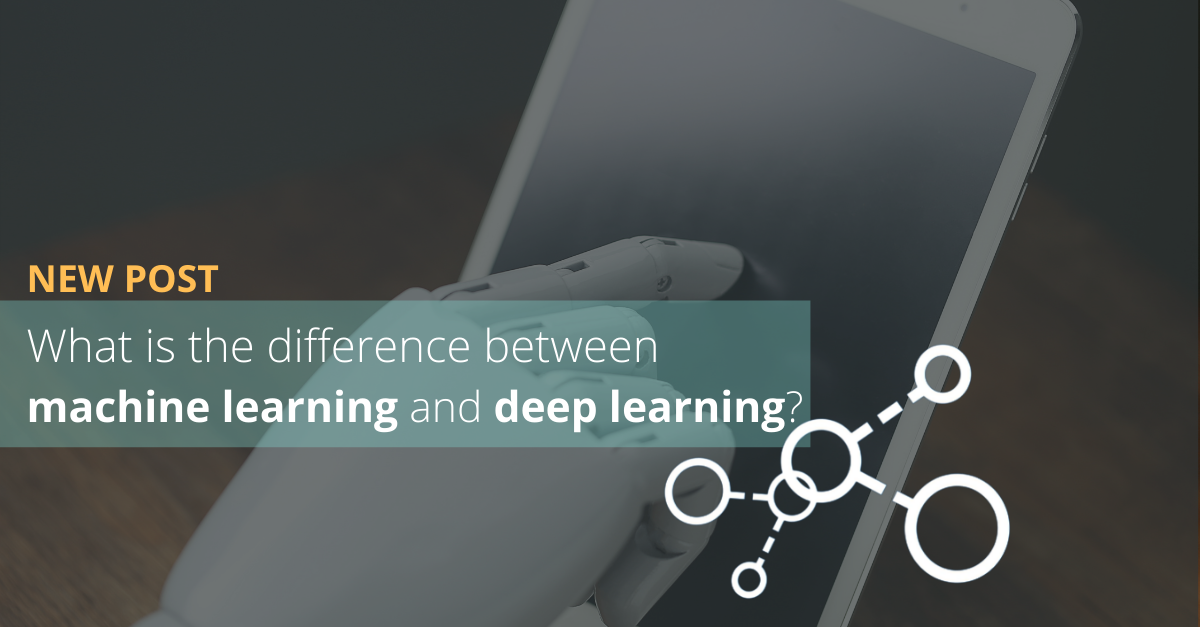Machine learning and deep learning are the two main concepts within data science and subsets of the wider field of artificial intelligence. Many novices use the terms machine learning, deep learning and artificial intelligence as if they all meant the same thing. They are in fashion. But actually, although they are related to each other, all these terms have different meanings.
For example, at Pangeanic we use "deep adaptive machine translation” based on automated deep learning processes. In this article we will explain how machine learning is different from deep learning. But before we learn the differences, let's familiarize ourselves with both concepts first.
What is machine learning?
Machine learning is part of the field of artificial intelligence and the growing technology that allows machines to learn from previous datasets and perform a certain task automatically. In this way, the quantity and quality of the data, as well as other parameters (how varied the training dataset is, the "dirt" or "noise" in the data, repetitions, biases, the fact that they contain additional information, that is, they have undergone a process of data annotation, etc.) will have an impact on machine learning.
Through machine learning, computers (or rather, algorithms using large GPUs) learn from past experiences on their own, using statistical methods to improve performance and predict results without being explicitly programed for this.
Popular uses of ML are, for example, spam e-mail filtering, product recommendations (books or similar music), online fraud detection, etc.
Some useful ML algorithms are:
- Decision tree algorithm
- Naive Bayes classifier
- Random forests
- K-means clustering (for data mining)
- KNN algorithm
- Apriori algorithm, etc.
How does machine learning work?
We can understand how machine learning models work through the typical example of identifying the image of a cat or dog. To identify this, the ML model takes numerous images of cats and dogs as input data. The model itself is responsible for recognizing, inferring and extracting the different features of the images such as shape, height, nose, eyes, etc. It applies the classification algorithm and finally predicts the output.

What is deep learning?
Deep learning (DL) is a specialized subset of machine learning. Technically it works in the same way as machine learning, but with different capabilities and approaches. In deep learning, models use different layers to learn and discover ideas from the data.
Deep learning is based on the way that human brain cells known as neurons function, which leads us to the concept of artificial neural networks. This is also called deep neural networks or deep neural learning.
Some popular uses of deep learning are self-taught cars, machine translation, natural language processing, etc.

Some popular deep learning models are:
- Convolutional neural networks
- Recurrent neural networks
- Autoencoders
- Classic neural networks etc.
How does deep learning work?
We can understand how deep learning works using the same example of cat versus dog identification. The deep learning model takes the images as input data and feeds them directly into the algorithms without requiring any manual feature extraction steps. The images pass to the different layers of the artificial neural network and the layers predict the final output.
Key comparisons between machine learning and deep learning
Let us understand the key differences between these two terms on the basis of different parameters:

Conclusion: In conclusion, we can say that deep learning is machine learning but with greater capabilities and a different working approach. Selecting any one of them to solve a particular problem depends not only on the complexity of the problem but also on the amount of data available.
Over the last decade, artificial intelligence and branches such as Natural Language Processing have been integrated into our daily lives. They are the technologies that recommend books and movies, suggest food, customize our experiences as users of social networks, and that can predict behavior.



